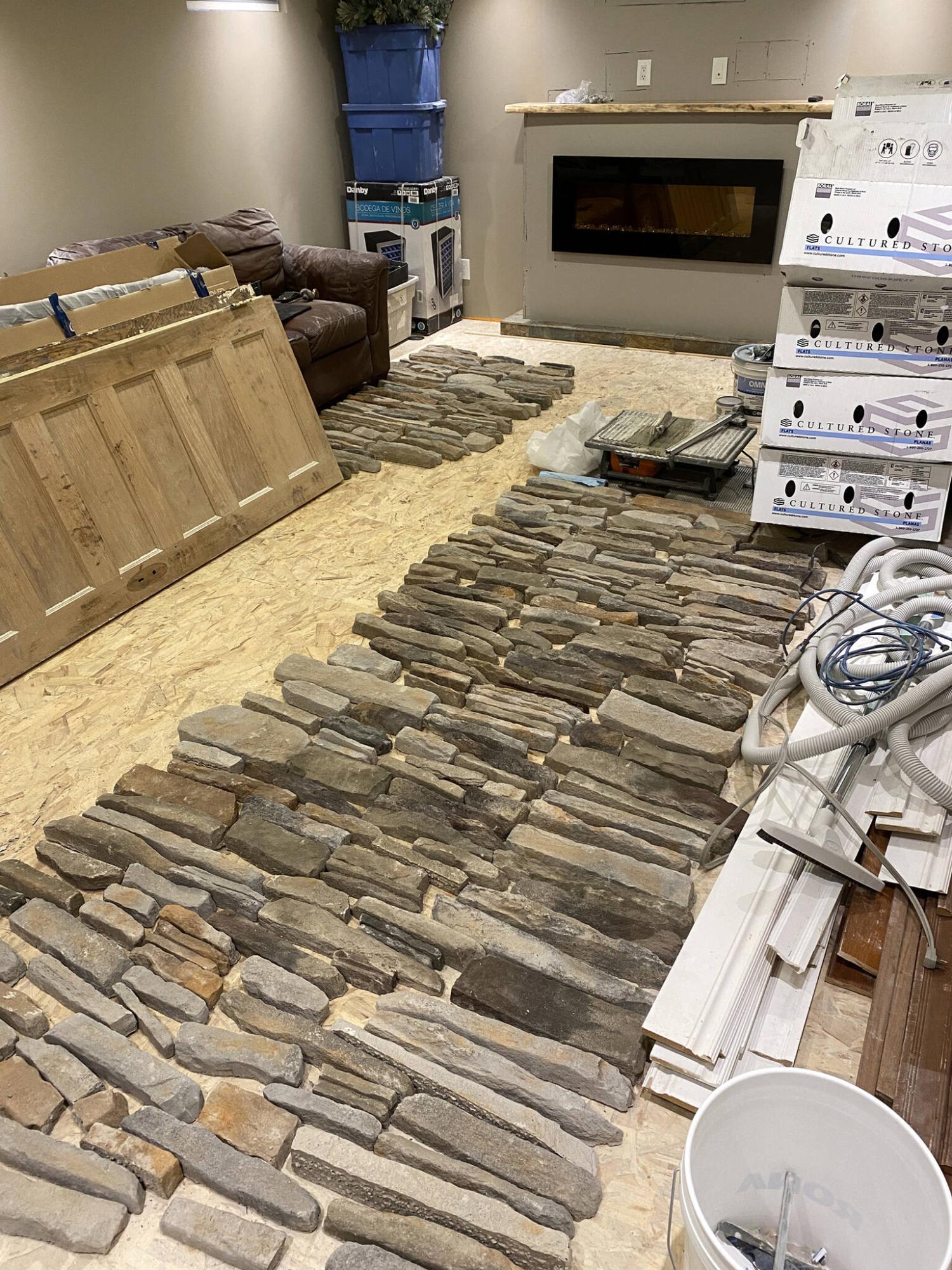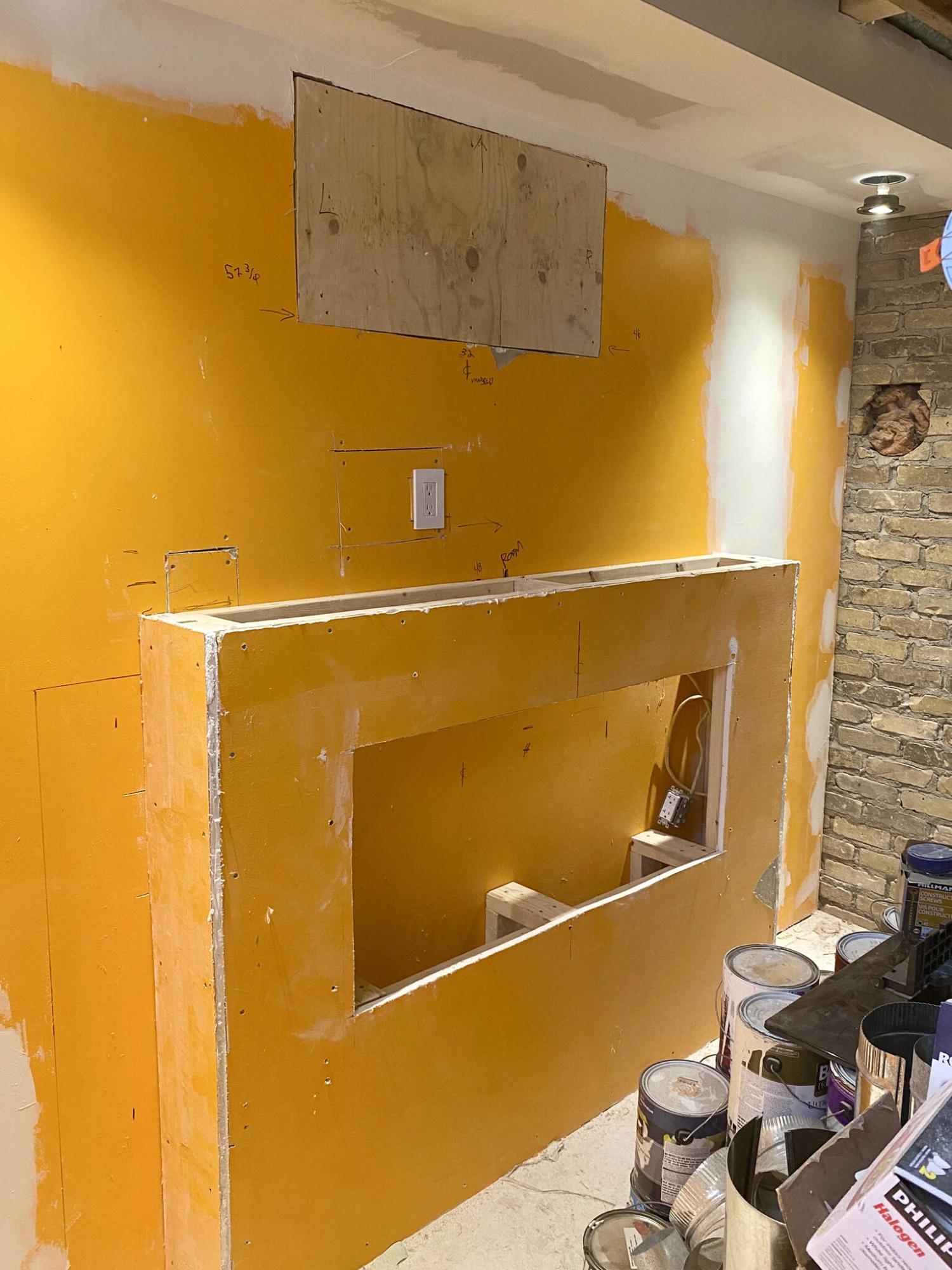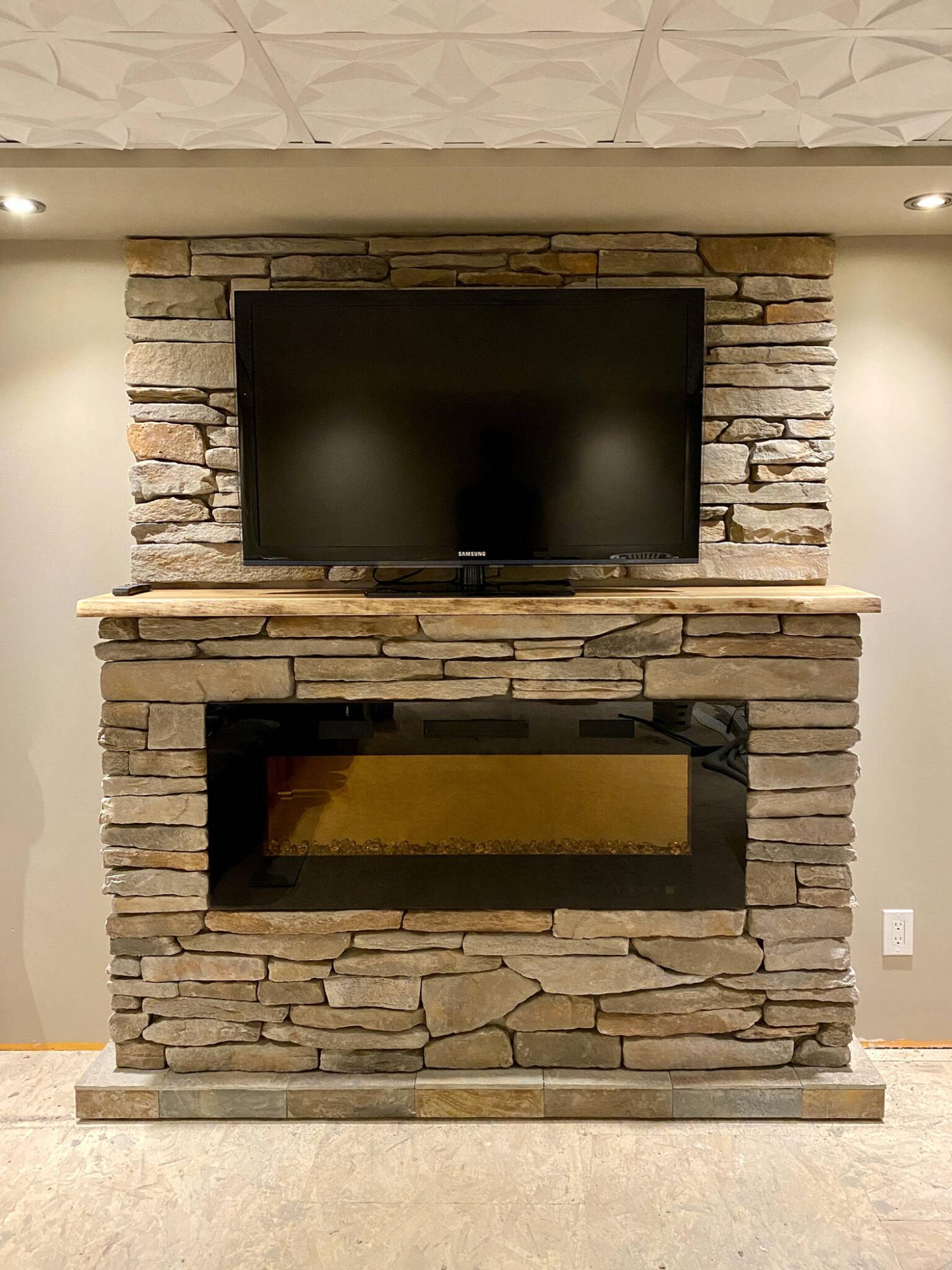
The stone is laid out to completely visualize all possibilities when choosing what stones fit best.

Recycled drywall was used to sheet the framing of the structure, set below the access panel to the crawl-space of the step-down dining room addition.

Photos by Marc LaBossiere / Free Press
Completed feature structure sheathed in cultured stone includes a 50-inch electric fireplace inset below a live-edge mantle, with TV above.
A while back the neighbour of homeowners a huge multi-tiered deck was being built for inquired as to whether my creative prowess went beyond exterior construction.
Upon further discussion, it became evident the young couple was interested in renovating their living room, by adding a feature wall that included a wall-mount electric fireplace and TV. Because this was similar to many projects I had achieved in the past, the project planning process began soon thereafter.
After assessing the costs and providing an estimate, a job agreement was generated and a small deposit was received to place the job in queue.
A few months before the project was set to begin, the homeowners were given some homework, in that they were asked to research certain aspects of the aesthetics that required their subjective input; type of decorative sheathing (tile, or stone), size of the flat-screen TV they were supplying themselves, and the size and style of the electric wall-mount fireplace, which had become an issue as they were unable to source a fireplace they liked.
Having achieved several of these projects, I suggested a wall-mount fireplace I had used several times in the past, listed at Wayfair.ca. Soon after looking into my lead, they agreed this was the best option. As such, I proceeded to purchase the wall-mount electric fireplace on their behalf well in advance, to ensure it would arrive well before the start date.
At some point during the early stages of discussions, and shortly before the start date, the homeowners decided on a stacked faux-stone to decorate the exterior of the structure. As there would also be a mantle embedded within the structure, to segregate the lower fireplace portion from the upper area that would showcase the TV and coincide with a few floating shelves on either side, I again suggested to the homeowners to review a few options on the Wayfair.ca website. That’s when things got weird — without warning, one of the homeowners began to indicate she thought the project was (supposed to be) a custom job. Not knowing what she meant, I replied by simply stating that it was, but we still needed a mantle. The situation escalated quickly, to the point where I thought it best not to proceed. As such, I refunded the couple their deposit and any other monies forwarded to cover other impending purchases. Although I had not yet ordered the building materials, the electric fireplace had already been delivered and was sitting in my garage.
Did the woman expect me to go out into the woods and chop down a tree for their mantle? What then deems a project, “custom”? In my world, anything that cannot be purchased and fully erected without on-site intervention is a custom project. For example, just because I’m not glazing my own porcelain tiles after pulling them out of the kiln myself, doesn’t make the odd-sized and tiled shower stall any less “custom.” At any rate, the wall-mount electric fireplace remained within my garage for quite a while, in lieu of subjecting myself to the hassle of returning it. And deep down, I truly believed that at some point, this fireplace would be put to good use. As it so happens, the time for putting it to great use came recently, in my own basement renovation.
On the far wall of our basement, a 69-inch-wide feature wall framework was constructed to about a 50 inches height, eight inches deep. Once the recycled drywall used to sheathe it was completed, the electric fireplace was mounted within the cavity. In that there is an access to the crawl space below the step-down dining room addition above this area, a small hatch was introduced flush with the wall. Cultured stone was then installed along the bottom frame, mitered along both corners towards the wall. Above the mantle, the two-inch deep stone was mounted directly to the wall, with seams that coincide with the access panel. Due to this, the TV sits on a stand in lieu of being mounted to the wall, and neatly conceals the access (even though it’s hard to decipher within the complexity of the stone layout, anyway). The base along the bottom protrudes slightly from the structure, creating a decorative hearth covered in remnant slate tile that had been used in many areas throughout the house. Once completed, the feature wall, although waiting for decades to be introduced, appeared as though it belonged. And fortunately, we already had the electric fireplace on site, to complete the project.
It doesn’t happen very often, that an impasse with a homeowner prevents a project from proceeding. In this instance, however, it seems there was no harm done largely due to the repurposing of an electric fireplace that I elected not to return, as it was suitable for our own basement renovation. And just in case anyone is wondering — no, I did not cut down a tree in the forest to create the mantle shown, nor did I culture my own stone. The mantle is actually a live-edge board, marketed as a bench seat from Rona. Does this make it any less of a “custom” project? You be the judge.
RenoBoss.Inc@outlook.com



